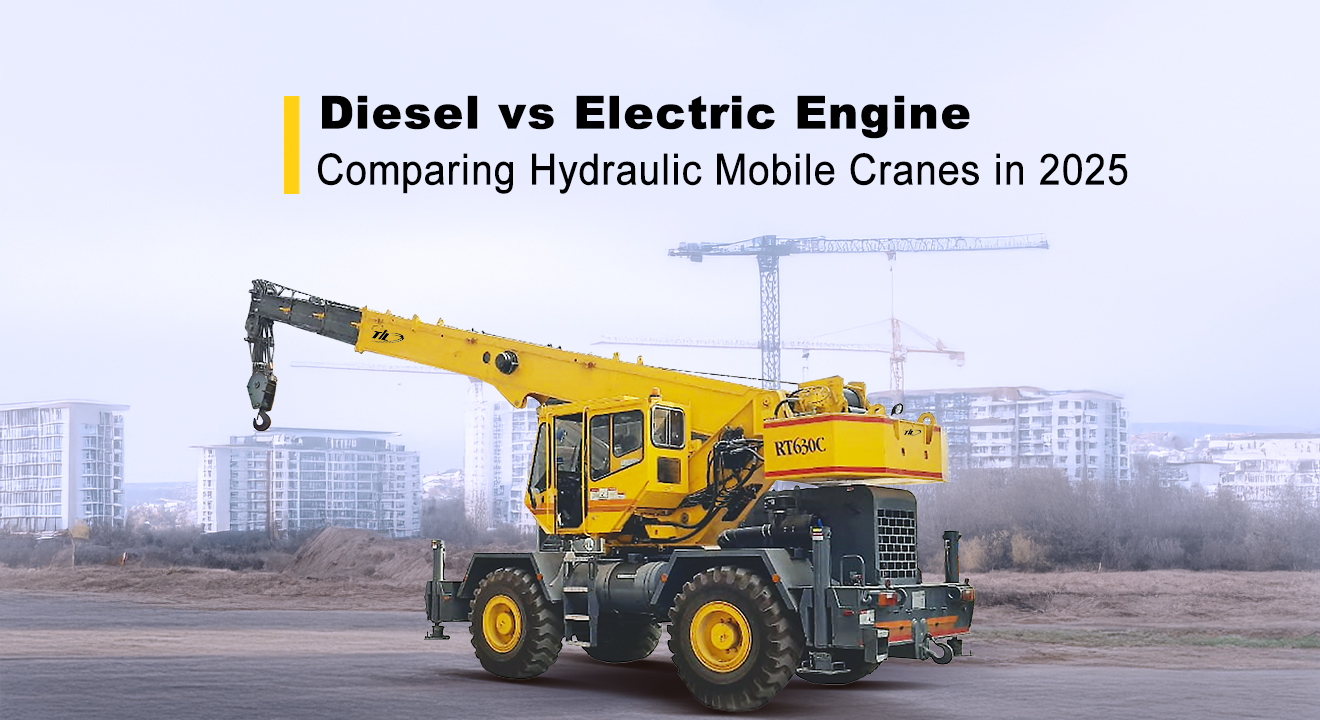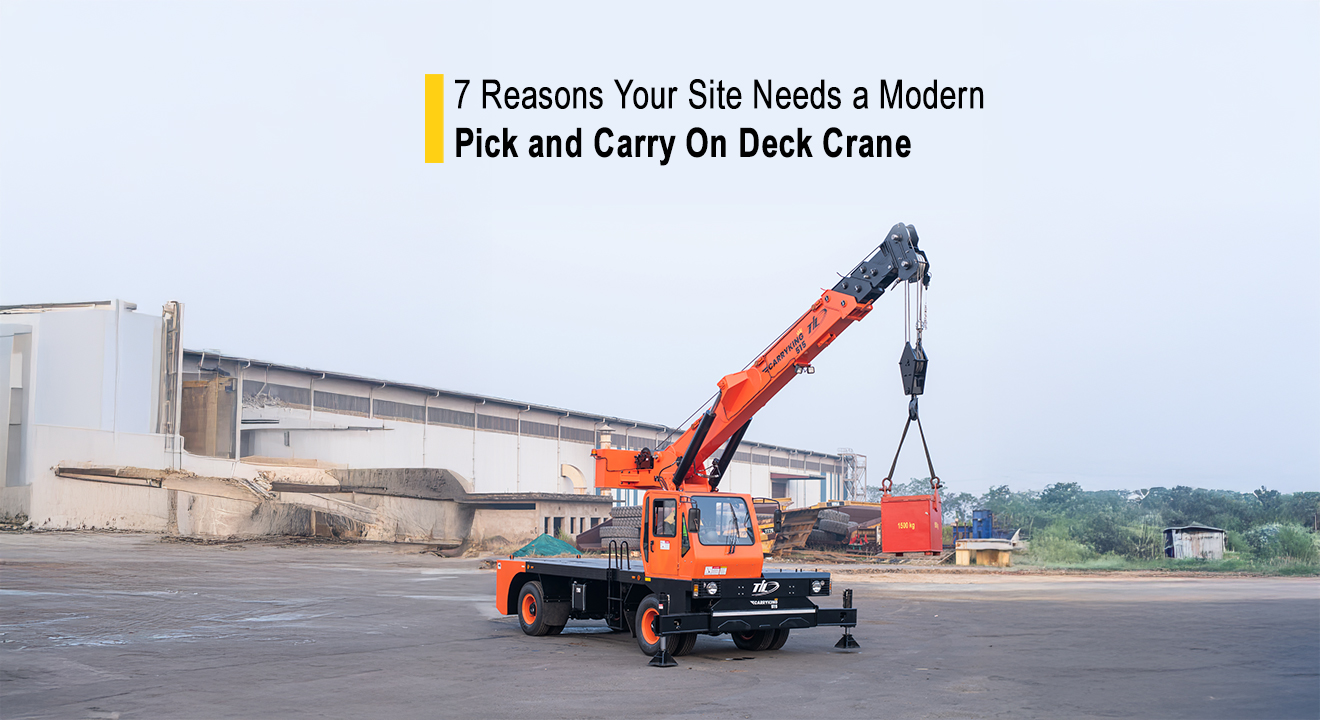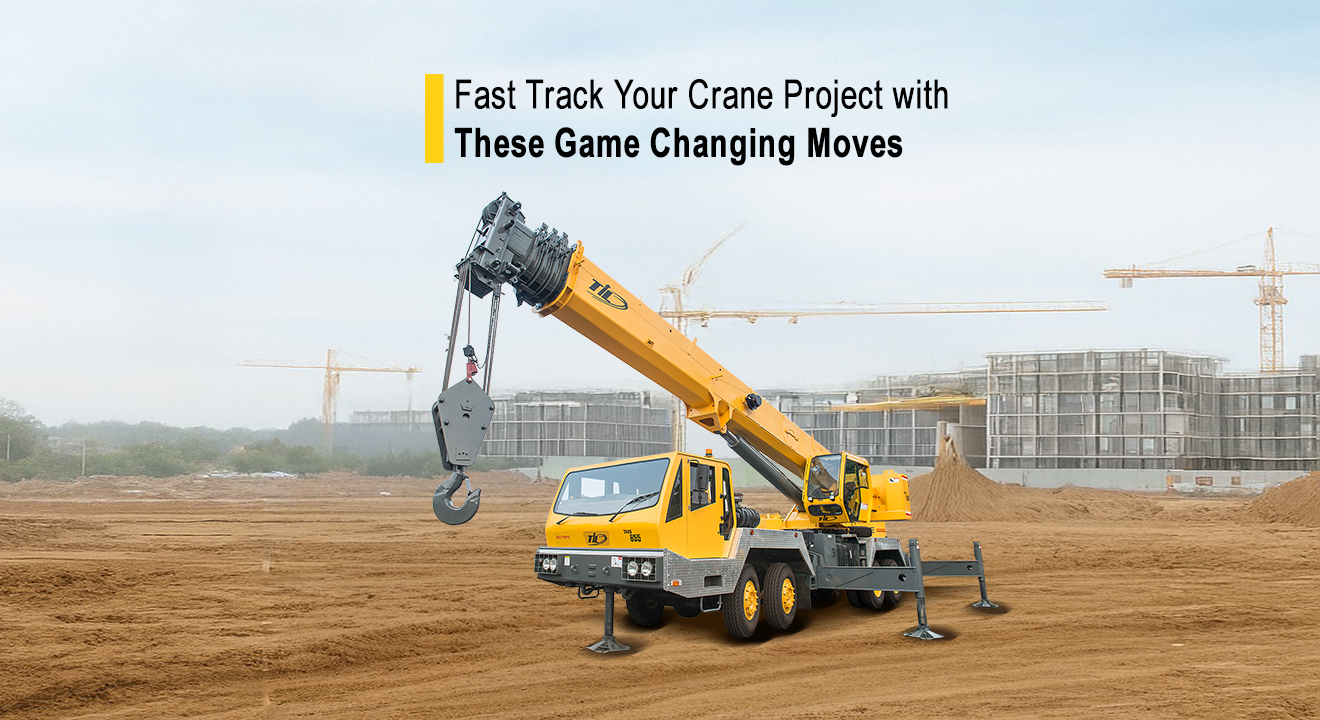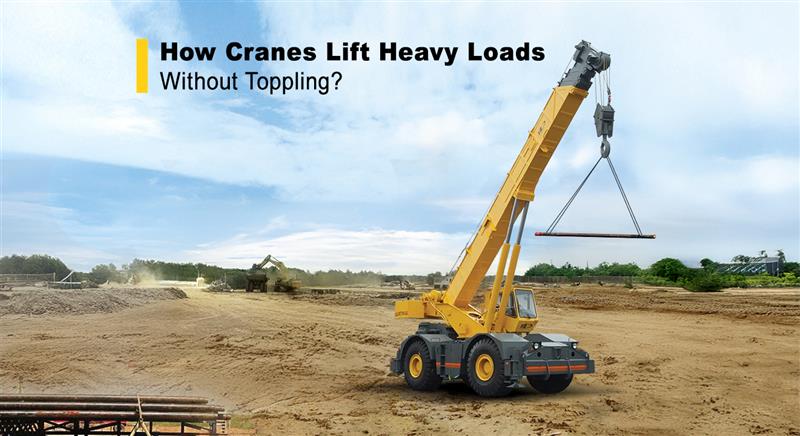
In 2025, mobile cranes aren’t just lifting loads; rather, they are powering progress on today’s fast-paced job sites. As construction projects are becoming more complex, simply depending on raw power will not be enough. You need to consider speed, agility, emissions, and total cost of ownership.
With global infrastructure investment projected to reach $94 trillion by 2040, the pressure is on. Contractors now must make smarter, faster choices.
When it comes to core systems like hydraulics, not much has changed mechanically. However, how those systems are powered is evolving. For decades, diesel engines have been the first choice, but now, electric engines are gaining serious ground.
So, let’s try to decide between diesel and electric mobile cranes for your next project.
Table of Contents
How do Hydraulic Cranes Operate?
Hydraulic cranes operate through a system of pressurised fluid, pistons, and pumps, which work together to lift and move loads. It all comes down to Pascal’s Law. So, when pressure is applied to a fluid in a closed system, it gets transmitted equally in all directions, which allows cranes to lift massive loads.
However, the hydraulic system doesn’t run itself. It needs power, either from a diesel engine or an electric motor, to drive the pump. So, while hydraulics remain constant, your engine choice is going to make a real difference.
Diesel Engine Mobile Cranes
Diesel engines have powered mobile cranes for decades. They are tough, powerful, and ready to operate in any environment. Suppose you are working off-grid, diesel would deliver the performance you need, without having to rely on electric grids or charging stations.
However, these come with downsides, too, such as:
- Emissions are a major concern, especially in cities or areas with strict environmental policies.
- Diesel cranes are also loud, which can create safety issues on active job sites.
- Over time, the fuel, maintenance, and potential emissions penalties can stack up.
Electric Engine Mobile Cranes
Electric-powered cranes are gaining traction these days. They are quiet, clean, and proving to be quite efficient. They do not burn fuel; instead, they draw energy from batteries or direct power sources, which means zero emissions on-site. So, they are a perfect fit for sites looking to meet strict sustainable targets.
However, they are not perfect, either, and they too have downsides, such as:
- Electric cranes still face challenges in remote or high-load environments, especially where charging infrastructure is unavailable.
- Some models may have reduced lifting capacity due to power or cooling limits.
- The upfront cost is higher, though many contractors find the lower operating expenses make up for that over time.
Cost Breakdown: Diesel vs Electric-powered Cranes
Diesel-powered cranes
Diesel-powered cranes typically cost less upfront, such as the TIL RT cranes. They are easier to source, faster to deploy, and compatible with existing crews and fuelling infrastructure.
But, diesel’s real cost shows up later, in fuel bills, higher maintenance, and emissions-related fees or restrictions.
Electric-powered cranes
Electric-powered cranes are more expensive to buy, but they often save money over time, as they have lower energy costs. Also, you might be able to monetise emission reductions through the Carbon Credit Trading Scheme.
However, when you shift to an electric model, it also comes with new safety protocols, leading to additional expenses.
Thus, when it comes to diesel-powered cranes vs. electric-powered cranes, if you’re running the numbers, look at total cost of ownership (TCO) over the crane’s lifecycle.
Environmental and Safety: Diesel vs Electric-powered Cranes
Switching to electric cranes can drastically cut a project’s carbon footprint, which you might not be able to achieve with a diesel-powered crane. So, if your project has to meet sustainability targets as well, then electric cranes would be your go-to option.
However, electric cranes operate with high-voltage systems, which can pose risks like arc flashes if not handled properly. Other than this, you might also have to deal with certain pain points, such as:
- Workers need specialised training and protective gear, which can limit who can safely work near electric cranes.
- The electromagnetic interference (EMI) can affect workers with pacemakers or similar medical devices.
- Most electric cranes rely on lithium-ion technology, which has the risk of getting damaged, overheating, catching fire or even exploding.
- If the batteries catch fire, these are hard to extinguish and can release toxic fumes, posing real safety threats on-site.
Making the Right Choice for Your Project
So, which engine is right for you? It depends entirely on the kind of work you’re doing.
If you are working on a short-term, heavy-lift job in a remote location, a diesel-powered crane is likely your best bet. It is powerful, independent of the grid, and can keep running in tough conditions.
But, if your project is in an urban area or tied to green building standards, an electric-powered crane is a smarter, future-proofed option. However, you must ensure that you have the right support systems in place, such as charging stations, trained crews, and appropriate safety protocols.
In some cases, the smartest move might be to maintain a mixed fleet. You can add diesel-powered cranes for demanding infrastructure work, and electric-powered cranes for clean, quiet, city-based projects.
Choosing the right crane engine in 2025 isn’t just about horsepower. It’s about future-proofing your business, reducing risk, and aligning your equipment with the way the industry is headed.
FAQs
What is the difference between diesel and electric engines in mobile cranes?
Diesel engines burn fuel to power hydraulic pumps and emit pollutants. Electric engines use battery or grid power, offer quieter operation, and produce zero emissions on-site.
Are electric cranes more expensive?
Yes, the initial price is higher, but they often pay off with lower running costs, less maintenance, and possibly the Carbon Credit Trading Scheme.
Which type is better for sustainable construction?
Electric cranes are considered to be part of sustainable construction. They significantly reduce emissions, noise, and align well with ESG and green building goals.
Are electric cranes safe?
They are safe when operated correctly, but they come with a few risks, such as high-voltage hazards and EMI. Thus, before operating them, proper training and planning are essential.




